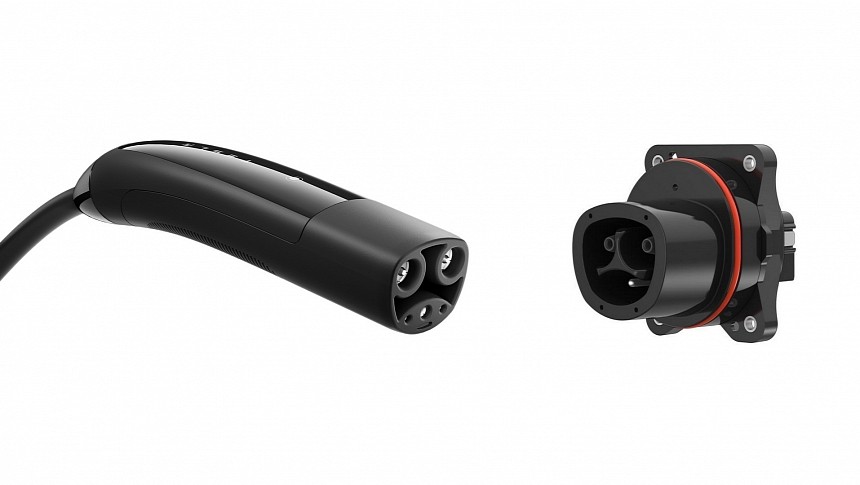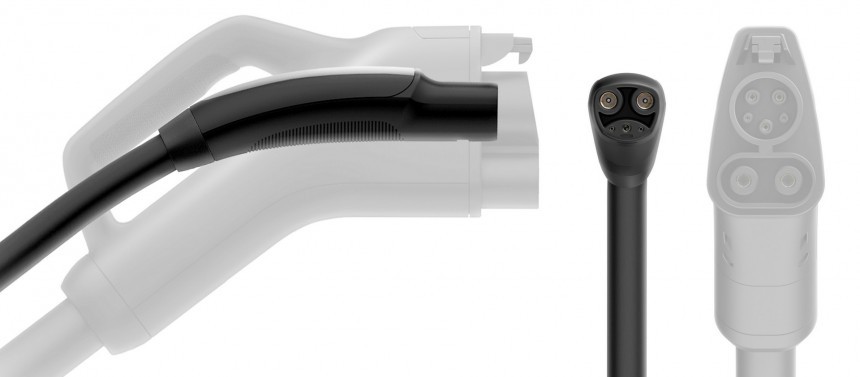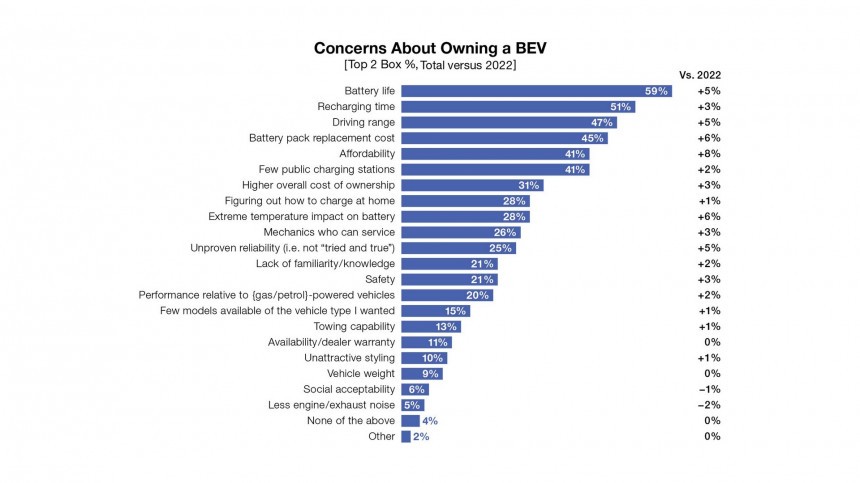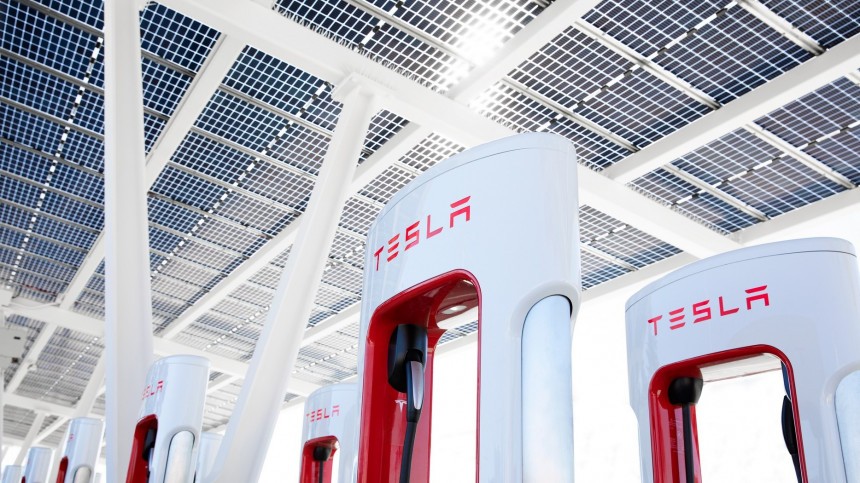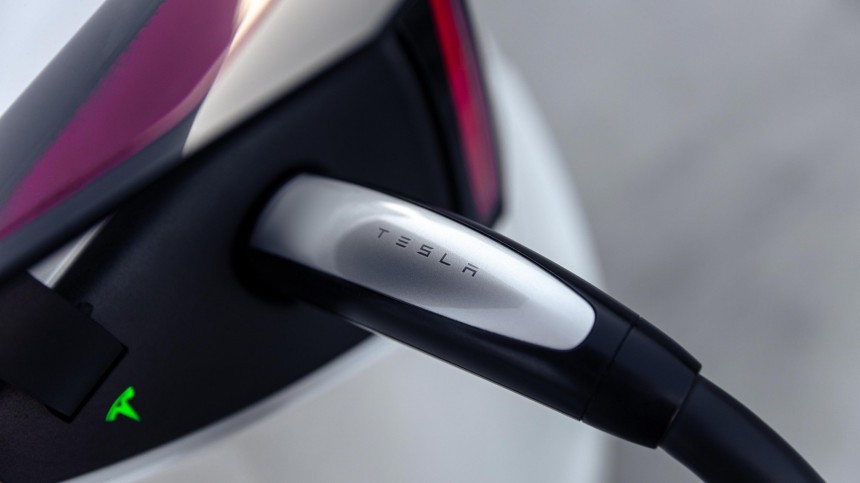I had just finished writing about how the intention to buy a battery electric vehicle (BEV) was dropping in the US when Rivian announced it would be the next car company to adhere to the North American Charging Standard (NACS). Not only that: it will also have access to the Supercharging network, which is what really matters in all these deals. As disconnected as these two facts may seem, they are closely related: this collective surrender to NACS is a desperate attempt to escape a charging crisis in the making.
Just think about it: those companies are planning to sell millions of electric cars. To get there, they have to ensure their customers will be able to charge easily anywhere they go. If they didn't, it would be like trying to sell fuel cell vehicles (FCEVs) without a hydrogen network: people would not buy them. That's a risk a larger scale of BEV sales will inevitably bring.
While Tesla created a dedicated charging network for its cars, other BEV makers decided to count on third-party chargers from ChargePoint, Blink, Electrify America, EVGo, and many others. Their attempts to create a reliable environment for all the new electric cars being sold nowadays failed: it is challenging to deal with such a diverse universe of BEVs and carmakers when it comes to charging. That leads to daily complaints all over the internet about terrible charging experiences, particularly in emergency situations.
This movement is almost obvious. The Biden government established BEVs as a priority and used the Inflation Reduction Act (IRA) to incentivize their local production and sales. If it didn't do that, it would be at the mercy of China and its BEV and lithium-ion battery industry. The government also wanted to stimulate charging networks, but only those that would service electric cars from more than one brand. In other words, Tesla's Supercharging network would not receive government money if it did not allow vehicles from other BEV makers to get juice on its premises. While it could theoretically ignore the incentives, using its Superchargers to earn more probably rang a bell with Tesla.
That would have a limited effect if other automakers did not see a competitive advantage with using the Supercharging network. In fact, they probably realized that it was more than an advantage: it was a need. How could they plan the production of millions of BEVs and sell them without having where to reliably charge these cars?
Among the most relevant concerns respondents shared with Ipsos in its 2023 Navigator study, the time people will spend at a charging station is the second biggest worry. Fears about the driving range also relate to having an insufficient number of public charging stations. That all shows that the declining percentage of customers willing to buy a BEV has charging concerns as one of its main reasons.
Tesla did a good job with its Supercharging stations and the experience they provide. The seamless plug and charge process they offer is a major plus, and superchargers are usually only down if the grid is facing issues. When potential buyers of Ford, GM, or Rivian BEVs know they will be able to use these fast chargers, they will probably feel reassured about purchasing such vehicles. But there is a lot of work ahead for Tesla, Ford, GM, Rivian, and any other BEV maker willing to use Superchargers and the NACS.
Alex Dykes, from the YouTube channel Alex on Autos and the Auto Buyers Guide, shared his experience with charging BEVs from other brands at Tesla's Magic Docks (which have CCS adapters). He faced issues that people complain about in other networks, such as charging session interruptions and a low charging speed. Dykes also mentioned another one, pretty specific to Tesla: short charging cords. Apart from using NACS, the vehicles from other carmakers will have to have their charging ports on their left rear quarter panels. And this is just the hardware fix.
For the vehicles not to have charging interruptions and acceptable speeds, their software will need a good integration with Tesla's system. For that to happen, either the companies will agree on a standard protocol, or Tesla will have access to how its competitors charge. It may also be the other way around, with Tesla sharing its charging secrets with the companies willing to use Superchargers. A common language is the safest bet for all parties involved.
If that does not happen, all the hype around NACS being more widespread will be short-lived. Owners of BEVs from these other brands that face a lousy experience at Supercharging stations will just have more options to get mad with the charging process. Tesla advocates hope that this will drive these customers to purchase BEVs from their beloved company, but they miss something crucial: these customers would already have a Tesla if they really wanted. Those guys going there with "alien" electric cars are the ones who don't like the brand but may appreciate the charging experience. Giving Tesla some of their hard-earned money for electrons will depend on what the BEV maker can offer them.
That all may also have the outcome the Ipsos research pointed out: people may just give up on current electric cars and wait for something that is truly convenient. That will force the electric shift in the US to be based on rules and regulations. Although the IRA is one example of that strategy, it should not be the only one.
While Tesla created a dedicated charging network for its cars, other BEV makers decided to count on third-party chargers from ChargePoint, Blink, Electrify America, EVGo, and many others. Their attempts to create a reliable environment for all the new electric cars being sold nowadays failed: it is challenging to deal with such a diverse universe of BEVs and carmakers when it comes to charging. That leads to daily complaints all over the internet about terrible charging experiences, particularly in emergency situations.
That would have a limited effect if other automakers did not see a competitive advantage with using the Supercharging network. In fact, they probably realized that it was more than an advantage: it was a need. How could they plan the production of millions of BEVs and sell them without having where to reliably charge these cars?
Tesla did a good job with its Supercharging stations and the experience they provide. The seamless plug and charge process they offer is a major plus, and superchargers are usually only down if the grid is facing issues. When potential buyers of Ford, GM, or Rivian BEVs know they will be able to use these fast chargers, they will probably feel reassured about purchasing such vehicles. But there is a lot of work ahead for Tesla, Ford, GM, Rivian, and any other BEV maker willing to use Superchargers and the NACS.
For the vehicles not to have charging interruptions and acceptable speeds, their software will need a good integration with Tesla's system. For that to happen, either the companies will agree on a standard protocol, or Tesla will have access to how its competitors charge. It may also be the other way around, with Tesla sharing its charging secrets with the companies willing to use Superchargers. A common language is the safest bet for all parties involved.
That all may also have the outcome the Ipsos research pointed out: people may just give up on current electric cars and wait for something that is truly convenient. That will force the electric shift in the US to be based on rules and regulations. Although the IRA is one example of that strategy, it should not be the only one.
